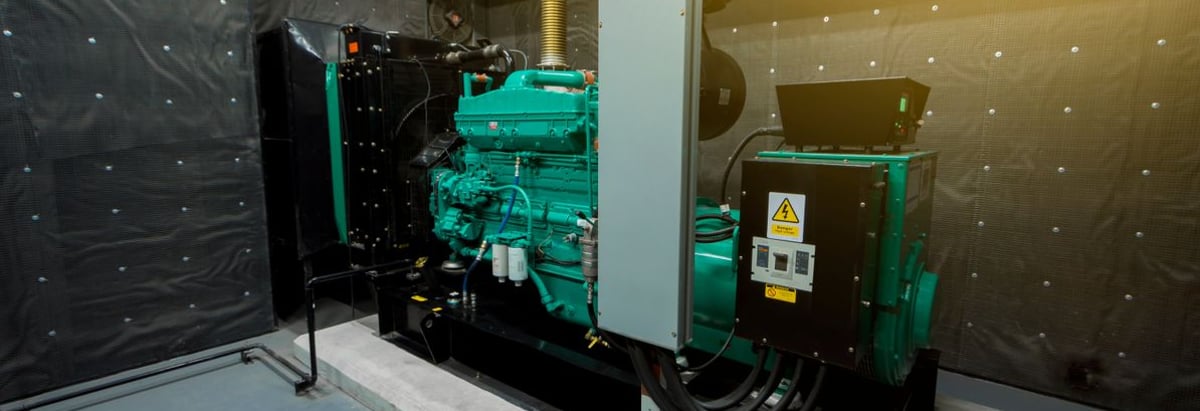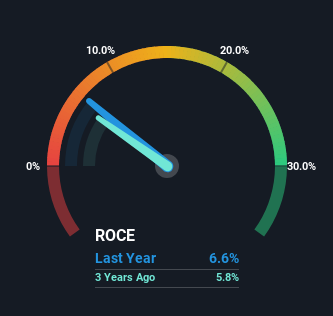- China
- /
- Electrical
- /
- SZSE:200771
The Return Trends At Hangzhou Turbine Power Group (SZSE:200771) Look Promising

Finding a business that has the potential to grow substantially is not easy, but it is possible if we look at a few key financial metrics. Typically, we'll want to notice a trend of growing return on capital employed (ROCE) and alongside that, an expanding base of capital employed. Basically this means that a company has profitable initiatives that it can continue to reinvest in, which is a trait of a compounding machine. With that in mind, we've noticed some promising trends at Hangzhou Turbine Power Group (SZSE:200771) so let's look a bit deeper.
Return On Capital Employed (ROCE): What Is It?
For those that aren't sure what ROCE is, it measures the amount of pre-tax profits a company can generate from the capital employed in its business. Analysts use this formula to calculate it for Hangzhou Turbine Power Group:
Return on Capital Employed = Earnings Before Interest and Tax (EBIT) ÷ (Total Assets - Current Liabilities)
0.066 = CN¥679m ÷ (CN¥17b - CN¥6.4b) (Based on the trailing twelve months to December 2023).
So, Hangzhou Turbine Power Group has an ROCE of 6.6%. On its own that's a low return on capital but it's in line with the industry's average returns of 6.7%.
See our latest analysis for Hangzhou Turbine Power Group

While the past is not representative of the future, it can be helpful to know how a company has performed historically, which is why we have this chart above. If you'd like to look at how Hangzhou Turbine Power Group has performed in the past in other metrics, you can view this free graph of Hangzhou Turbine Power Group's past earnings, revenue and cash flow.
How Are Returns Trending?
While in absolute terms it isn't a high ROCE, it's promising to see that it has been moving in the right direction. The numbers show that in the last five years, the returns generated on capital employed have grown considerably to 6.6%. Basically the business is earning more per dollar of capital invested and in addition to that, 41% more capital is being employed now too. So we're very much inspired by what we're seeing at Hangzhou Turbine Power Group thanks to its ability to profitably reinvest capital.
What We Can Learn From Hangzhou Turbine Power Group's ROCE
A company that is growing its returns on capital and can consistently reinvest in itself is a highly sought after trait, and that's what Hangzhou Turbine Power Group has. And investors seem to expect more of this going forward, since the stock has rewarded shareholders with a 76% return over the last five years. Therefore, we think it would be worth your time to check if these trends are going to continue.
One more thing to note, we've identified 1 warning sign with Hangzhou Turbine Power Group and understanding it should be part of your investment process.
While Hangzhou Turbine Power Group may not currently earn the highest returns, we've compiled a list of companies that currently earn more than 25% return on equity. Check out this free list here.
If you're looking to trade Hangzhou Turbine Power Group, open an account with the lowest-cost platform trusted by professionals, Interactive Brokers.
With clients in over 200 countries and territories, and access to 160 markets, IBKR lets you trade stocks, options, futures, forex, bonds and funds from a single integrated account.
Enjoy no hidden fees, no account minimums, and FX conversion rates as low as 0.03%, far better than what most brokers offer.
Sponsored ContentValuation is complex, but we're here to simplify it.
Discover if Hangzhou Turbine Power Group might be undervalued or overvalued with our detailed analysis, featuring fair value estimates, potential risks, dividends, insider trades, and its financial condition.
Access Free AnalysisHave feedback on this article? Concerned about the content? Get in touch with us directly. Alternatively, email editorial-team (at) simplywallst.com.
This article by Simply Wall St is general in nature. We provide commentary based on historical data and analyst forecasts only using an unbiased methodology and our articles are not intended to be financial advice. It does not constitute a recommendation to buy or sell any stock, and does not take account of your objectives, or your financial situation. We aim to bring you long-term focused analysis driven by fundamental data. Note that our analysis may not factor in the latest price-sensitive company announcements or qualitative material. Simply Wall St has no position in any stocks mentioned.
About SZSE:200771
Hangzhou Turbine Power Group
Designs, manufactures, and sells industrial steam turbines, gas turbines and complement, and spare parts in China.
Excellent balance sheet second-rate dividend payer.
Similar Companies
Market Insights
Community Narratives



